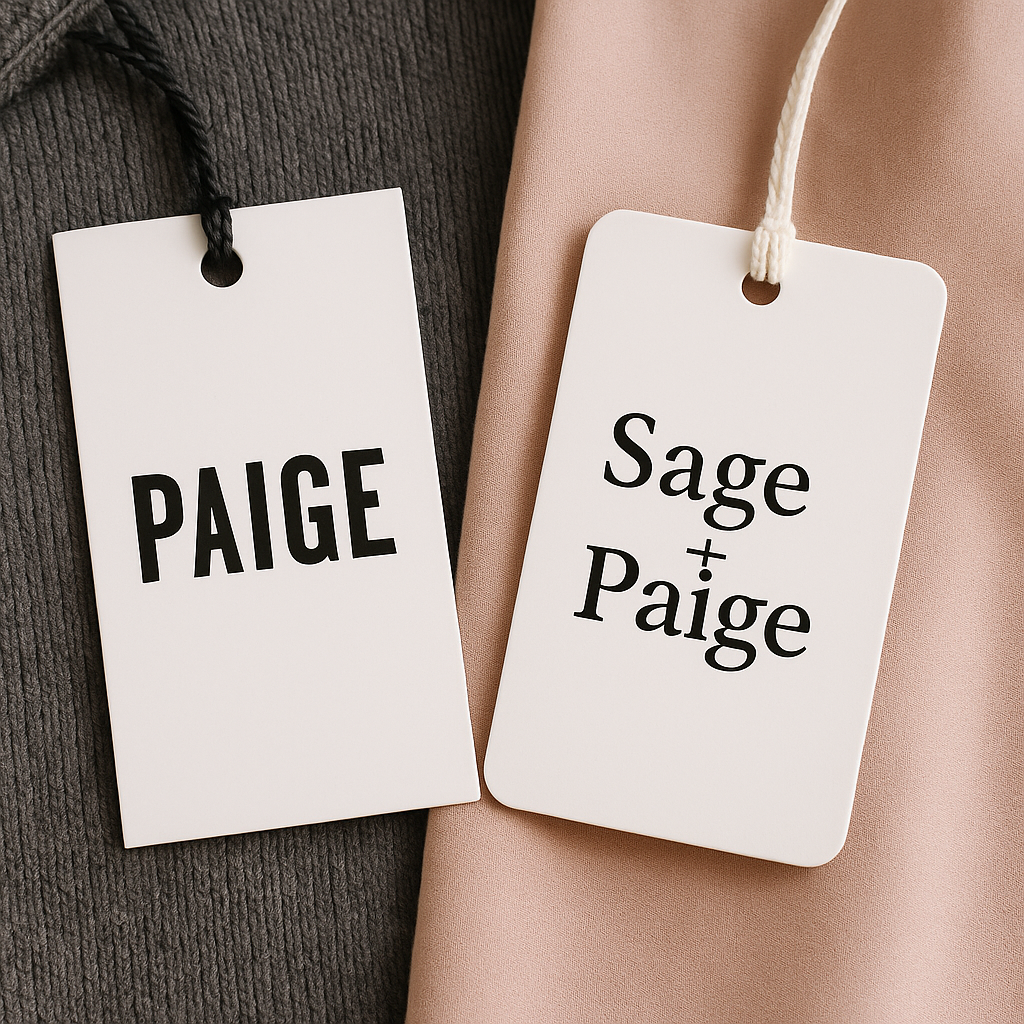What’s in a Name? Paige LLC Fails to Block “Sage + Paige” Despite Collab Confusion Claims
 In a decision straight from the catwalk of modern trade mark law, the Federal Court has dismissed a challenge by Californian fashion label Paige LLC against the Australian brand Sage + Paige, ruling that the newer composite marks are not deceptively similar to PAIGE and won’t mislead fashion-savvy Aussie consumers.
In a decision straight from the catwalk of modern trade mark law, the Federal Court has dismissed a challenge by Californian fashion label Paige LLC against the Australian brand Sage + Paige, ruling that the newer composite marks are not deceptively similar to PAIGE and won’t mislead fashion-savvy Aussie consumers.
Decision: Paige LLC v Sage and Paige Collective Pty Ltd [2025] FCA 750 (10 July 2025) (Needham J)
👗 Background: Denim v Dresses
Paige LLC, known globally for its premium denim and celeb collabs, owns the trade mark PAIGE in Australia. When Aussie fashion house Sage and Paige Collective Pty Ltd applied to register two composite trade marks—Saige + Paige (stylised with a pink circle) and Sage + Paige (stylised, but text-only)—the US company objected under:
-
Section 44: deceptive similarity to its PAIGE marks, and
-
Section 60: likelihood of confusion due to its established reputation.
The core argument? That the “+” sign in Sage + Paige might lead consumers to believe it’s a collaboration with PAIGE—a well-known practice in fashion.
⚖️ The Court’s Take
Justice Needham accepted that brand collaborations (or “collabs”) are indeed a recognised trend, and the notional consumer might think of such things. But that wasn’t enough.
“The use of two names with the same stylisation tend to indicate… a singular brand name, rather than two separate, collaborating, brand names.” — Needham J at [89]
Despite PAIGE having a modest reputation in Australia, the Court found no real, tangible danger of deception or confusion. The composite marks were deemed to stand on their own: visually unified, aurally distinct, and conceptually grounded in a “two names, one brand” tradition, not a collab cue.
🧵 Key Takeaways
-
“+” doesn’t equal collab: Just linking two names with a plus sign doesn’t automatically imply co-branding, even in industries where collabs are common.
-
Given names don’t always dominate: Paige is not an invented or highly distinctive term; it’s just a given name, and its presence doesn’t override the overall impression.
-
Stylisation and consumer habits matter: The Court looked at actual branding trends and consumer practices (like buying online and familiarity with fashion collabs).
🪡 The Bottom Line
This is a rich example of the law stitching together traditional principles of deceptive similarity with modern commercial practices. It shows how context—consumer knowledge, industry trends, brand stylisation—can make or break a trade mark opposition, even where name overlap exists.
For now, Sage + Paige gets to strut the IP runway without tripping over PAIGE’s heels.